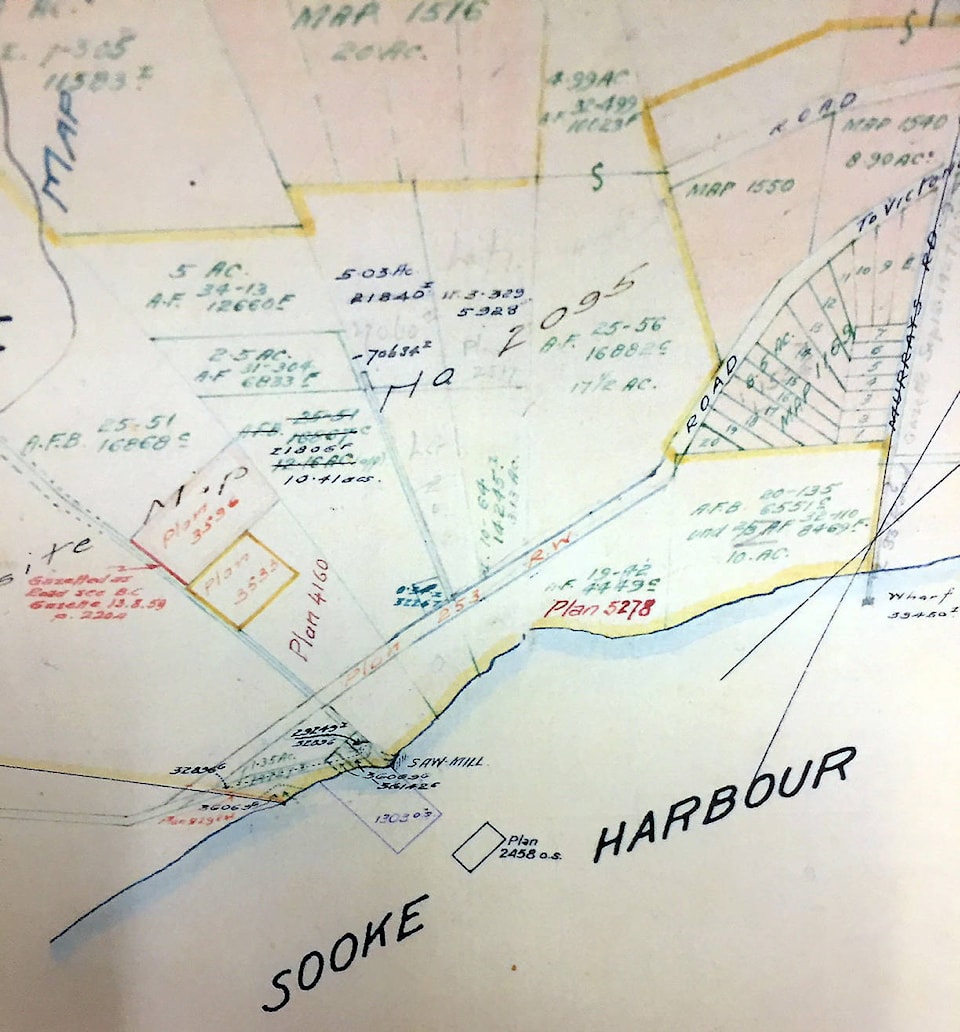Elida Peers | Contributed
We’re indebted for today’s image to Andy Barry, who recently purchased Burnside, the home of Michael Muir on Maple Avenue.
Andy was able to obtain a composite map showing, late 1880s, the waterfront area of Section III, Sooke Land District, focusing on the foot of Maple Avenue.
We were pleased to see the Muir sawmill marked – this was the final of several locations of the Muir steam sawmill, which closed down in 1888, with the death of Michael Muir.
While Michael was the youngest of the four sons of John and Ann Muir Sr., who emigrated from Scotland in 1849, bringing their family to this new frontier of Vancouver’s Island, he was the entrepreneur of the family.
This waterfront sawmill location is significant to Sooke’s industrial history for many reasons. While it served as a shipping point for lumber traffic, alongside the site where we believe the early Muir seagoing vessels were built, it was also to become the base for the fishtraps operations.
In 1904, J.H. Todd & Sons established the first cannery wharf at the right side of this image, at the foot of Murray Road, and a few years later the fishtraps operations had moved to the foot of Maple Avenue, where they operated until 1958 as Sooke Harbour Fishing and Packing Company.
The Muirs were the forerunners of the forest industry of B.C., and their sawmill history is widely recognized. Up to the late 1990s sawmilling was an important part of our region’s economy, and even today, there are limited sawmilling operations.
We have always found this account, written long ago by Alexander Gillespie, of Glenairley, East Sooke (his Victoria family financial firm was Gillespie, Hart & Co.), to be fascinating:
“For several summers my brothers Hebden, Ken and I were sent to Sooke in charge of our Chinese servant Fung. The Muirs were the original settlers in Sooke when Vancouver Island was still owned by the Hudson’s Bay Company and they were operating a sawmill situated near the present wharf.
“The Muirs did all their logging with oxen and I can remember we used to watch the great long-horned beasts yoked together, hauling out huge great logs along the skid roads. The timber was close to the water, so the hauls could not have been long; the logs were then floated to the mill, hauled up a ramp, and sliced up by a great circular saw.”
•••
Elida Peers is the historian of the Sooke Region Museum.
